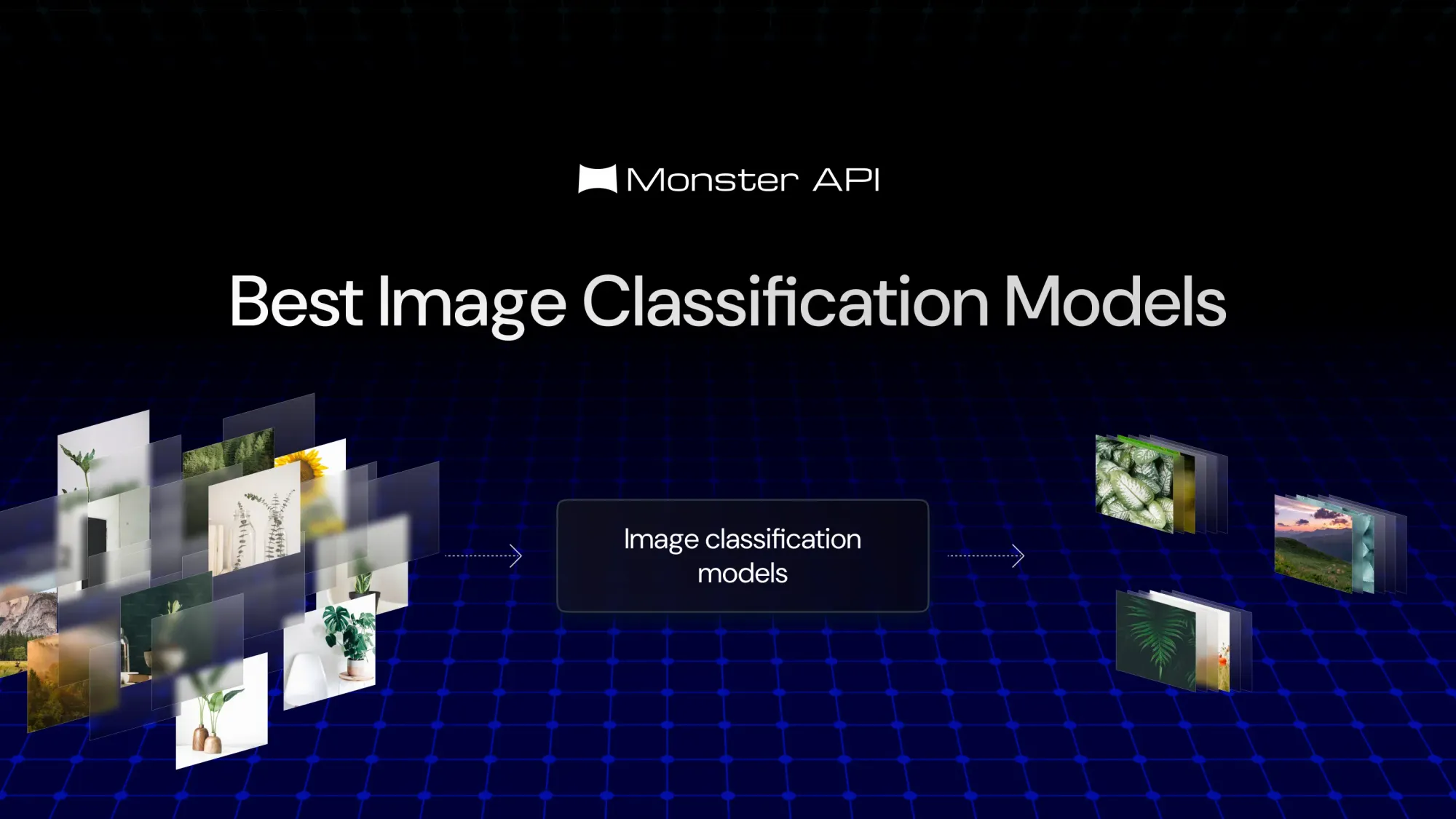Best Image Classification Models in 2024

You can find pre-trained models that can accomplish any task you want. These models, trained on a large corpus of data can capture patterns and features. There are models made specifically for image classifications. Using pre-trained models, developers can save on time and cost.
Instead of doing hours of manual work, image classification models like VGG, ResNet, and Inception have changed the playing field.
In this article, we’ll cover all the top models for image classification.
Top Pre-Trained Image Classification Models
Multiple image classification models have become the gold standard. Here are the best models for image classification:
1. ResNet (Residual Networks)
ResNet is a model from Microsoft’s Research department. They have revolutionized deep learning by using residual connections to mitigate the vanishing gradient issues in deep networks.
There are 3 ResNet variants – ResNet-50, ResNet-101, ResNet-152. Since the model’s launch in 2015, it has become a leader in image classification.
Features:
- Residual blocks allow gradients to flow through shortcuts.
- It can be used for general image classifications, object detection, and feature extraction.
- Deep architectures (up to 152 layers).
2. Inception (GoogLeNet)
Developed by Google is another one of the gold standard image classification models. Inception uses inception modules to capture multi-scale features. Inception comes in 3 different variants – Inception v3, Inception v4, Inception-ResNet.
Features:
- Accurate and computational balancing architecture.
- Inception can be used for general image classification, object detection, and transfer learning.
- Inception modules with convolutional filters of multiple sizes.
3. EfficientNet
EfficientNet is another image classification model made by Google. All the EfficientNet models achieve high-end accuracy with far fewer parameters compared to other models. Also, they use less computational power.
The EfficientNet models come in 2 different variants – VGG-16, VGG-19.
Features:
- 3x3 convolutions architecture that’s simple but efficient.
- Can be used for general image classification and transfer learning.
- Deep networks with 16 or 19 layers.
- VGG (Visual Geometry Group)
VGG or Visual Geometry Group is an image classification model made by a group at Oxford. These models are made for their simplicity and depth. There are 2 variants of the model named VGG-16, VGG-19.
Features:
- VGG models have deep networks with 16 or 19 layers.
- Simple architecture using only 3x3 convolutions.
- VGG models are great for image classification and feature extraction.
- MobileNet
MobileNet is another image classification model made by Google’s research team. The MobileNet models are designed especially for mobile and embedded vision applications. They come in 3 different variants – MobileNetV1, MobileNetV2, MobileNetV3.
Features:
- Lightweight architecture that’s optimized for mobile devices.
- Separable convolutions that are segregated depthwise.
- MobileNet can be used for Mobile image classification and embedded vision applications.
- DenseNet (Dense Convolutional Network)
Developed by researchers at Cornell University, the DenseNet is one of the best image classification models. DenseNet connects each later to every other later in a feed-forward fashion. The model has 3 variants – DenseNet-121, DenseNet-169, and DenseNet-201.
Features:
- DenseNet connections to improve gradient flow and feature reuse.
- Reduces the number of parameters compared to traditional convolutional networks.
- Can be used for general image classification and feature extraction.
- NASNet (Neural Architecture Search Network)
Developed by Google, NASNet is a neural network architecture optimized through neural architecture search techniques. This process used reinforcement learning to automatically design efficient network structures.
NasaNet has 3 variants - NASNet-A, NASNet-B, NASNet-C
Features:
- Automatic Architecture Design: Uses reinforcement learning to create efficient architectures.
- High Accuracy: Delivers strong performance on image classification tasks.
- Primarily used for image classification and as a base model for transfer learning tasks.
- Xception (Extreme Inception)
Created by Google, Xception builds upon the Inception architecture by using depthwise separable convolutions to improve efficiency and performance.
Features:
- Fully Convolutional Architecture: No fully connected layers, making it more efficient.
- Depthwise Separable Convolutions: Improves performance by reducing the number of parameters.
- Commonly used for general image classification tasks and as a base for transfer learning.
- AlexNet
Developed by Alex Krizhevsky, AlexNet was one of the first deep learning models to bring CNNs to the forefront of image classification.
Features:
- Simple 8-Layer Structure: An early example of CNN architectures.
- ReLU Activation and Dropout: Uses ReLU for activation and dropout for regularization to prevent overfitting.
- Known for its role in popularizing CNNs in image classification and used in historical benchmarks.
- Vision Transformers (ViT)
Created by Google, Vision Transformers bring the transformer model, originally used in NLP, to computer vision tasks.
Features:
- Transformer Encoder Architecture: Processes images using transformer blocks instead of traditional CNN layers.
- Scalability: Works well with large datasets and high computational power.
- Suitable for general image classification and large-scale vision tasks.
Conclusion
Pre-trained models have transformed image classification by offering efficient, ready-to-use solutions that save time and resources. Models like VGG, ResNet, and Inception have set standards for accuracy and efficiency, and they’re now used in various fields.
However, to use these models effectively, it’s important to understand both their advantages and limitations. As computer vision advances, pre-trained models will continue to play a key role in its development.

